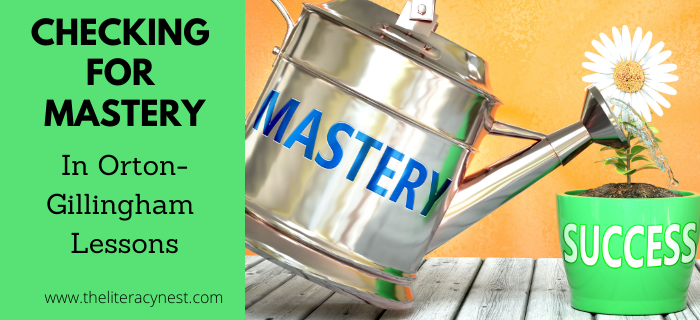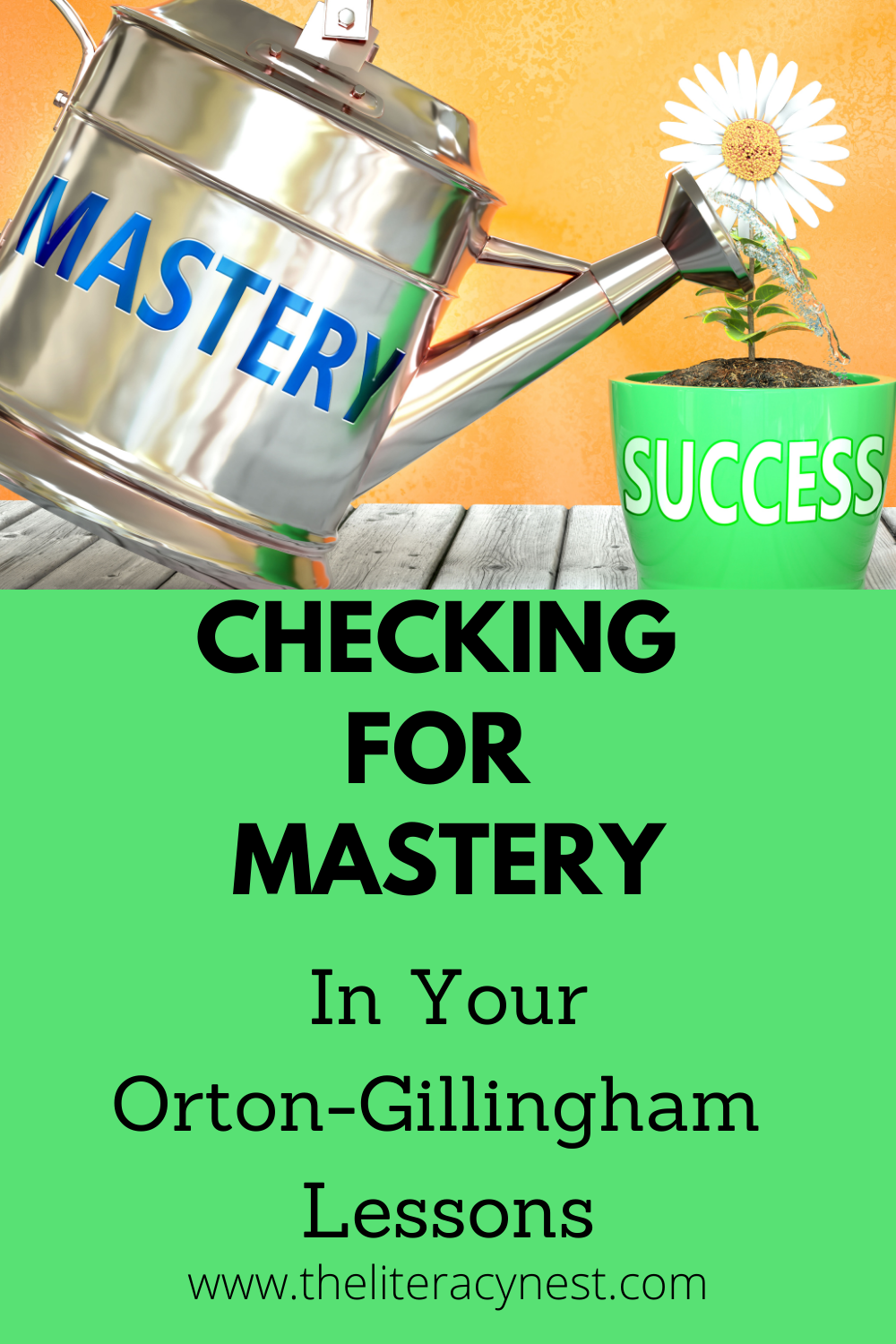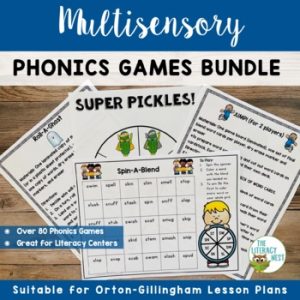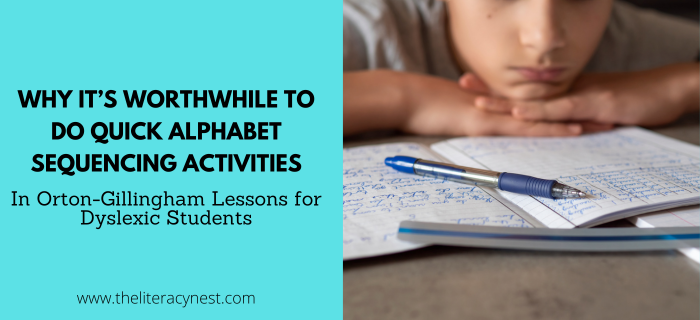Checking for Mastery In Orton-Gillingham Lessons

Teaching to mastery is one of the most important considerations when teaching your students with dyslexia. Striving readers and writers very often find the class and instruction moving forward before they have had a chance to master new concepts. This results in learning gaps. When I encountered this in pupils at school, I would describe their knowledge base as Swiss cheese. Regardless of where or how you received your Orton-Gillingham training, this principle of mastery is one that has likely been emphasized. But, if we are going to achieve mastery, we first need to define what mastery looks like.
What is mastery?
In general, mastery is considered to be an accuracy of 90% or greater. Mastery doesn’t imply completely error-free, nor does it mean that review isn’t important or necessary. In fact, part of achieving mastery is continuously integrating review and practice. Teaching for mastery is particularly important for students with learning challenges to help keep the cognitive load students are dealing with manageable.
When I think of true mastery I think of the automaticity of phonemes and independence in applying a spelling rule. Students may need reminders, but are able to verbalize their reasoning when correcting an error or applying a spelling concept. Ultimately, long-term mastery in Orton-Gillingham is when reminders, prompts, and regular review are no longer necessary. The student knows the skill cold. Think of the muscle memory involved in riding a bike or driving a car. Once you’ve learned those skills, you never forget them.
(This post contains one affiliate link.)
Why is mastery important?
To illustrate the importance of mastery, I want to use an example. You may have seen it as a puzzle or internet meme or quiz, you may even have encountered it as part of a psychology experiment. The Stroop effect refers to the phenomenon and challenge that occurs when a subject is presented with a list of color words written in a different color than that represented by the word.
red yellow blue
green purple orange
The task is challenging and requires much more conscious thought than simply naming colored squares or reading words. The way processing slows down when we ask our brain to manage competing and contrary sources of information gives us a little insight into what it is like to be a student with dyslexia. Tasks that may be automatic for a typical learner, require active and conscious thought for someone with a language-based learning challenge.
When teaching for mastery, one of the important reasons is to help your students be able to move some of these conscious tasks to greater automaticity to speed up their processing and allow them to use their working memory capacity more efficiently. Our goal is ultimately overlearning to make sure students are really solid.
We have a saying in the Orton-Gillingham community…
“Go as fast as you can and as slow as you must.” This may sound a bit confusing or contradictory, but it is incredibly good advice for any struggling student. There is no time to spare for children who struggle with reading. If a student reads and writes words with 5 sounds and blends with ease, it would be unnecessary and even foolhardy to meticulously teach each initial or final blend individually. However, it is just as unproductive to introduce multiple concepts and sounds at once or too rapidly if a student is struggling to apply what has been previously taught.
Check out 5 Tips for Ensuring Effective Routines in Orton-Gillingham Lessons.
How do we check for mastery in an Orton-Gillingham lesson?
It is important to understand that for some of your students, mastery may be a moving target. They may demonstrate mastery one day but not another. A variety of factors such as attention or anxiety may impact a student’s ability to demonstrate mastery. It is crucial to continually spiral and reviews to ensure that not only do students achieve mastery but maintain mastery. It is best to keep concepts in a constant cycle of review decreasing frequency as students consistently show mastery.
I often think my role as an Orton-Gillingham tutor is part coach, part teacher, and part observer. The best indicators of mastery come not from a one-time assessment but from our observations during the reading of word lists, nonsense word lists, and dictation. Are students applying their learning not only on isolated words but within the continuous text? Periodic assessments such as pre and post-level tests, Gallistel-Ellis assessments, or word reading fluency assessments can help us determine when mastery has been achieved.
Curious about what it means to be prescriptive and diagnostic? Check out this video where I explain what exactly these two principles mean.
We have mastery. What now?
You’ve gone as fast as you can and as slow as you must, and your student is consistently demonstrating the ease with these concepts in their daily lesson activities. Doing a more formal assessment shows consistent accuracy of 90% or greater. What do you do now? When your student is ready to move forward, integrate and plan an ongoing review of these concepts.
Some of my favorite ways to do this are to use a brief review of a spelling rule or concept as an introduction to new learning. Reviewing the k/ck spelling rule is a great way to warm up for teaching the ch/tch rule. Reviewing previously taught ways to divide syllables is a good way to activate prior knowledge before teaching new syllable division patterns. Another great opportunity for integrating review is through word choices both in the word lists and SOS. Typically, my spelling list is approximately half new words and half reviews. Finally, reviewing words helps to fill out a game when a new concept has a short word list.
When a student has achieved mastery of both decoding and encoding, you can think about gradually reducing the number of cards in a student’s card drill pack. Consonants, digraphs, and chunks that they have mastered can be set aside from the daily card drills. Spending the bulk of the time on tricky sounds and vowels keeps the lesson running smoothly. Occasional full-card practice is recommended.
What to do when mastery eludes us?
If you find your student is not achieving mastery with a certain skill set, the time has come to put on the scientific observer hat.
- Do a careful look back at recent lessons, and reflect on what has been done.
- Look for signs your student may be showing you for areas that need reteaching or review.
- Be diagnostic and prescriptive in your teaching.
- Carefully plan review activities to aid retention of areas of difficulty.
- Games and sorts are great ways to incorporate review and a great deal of practice in a fresh way. They are also a great way to practice between tutoring sessions.
- Check your own teaching. Are you incorporating plenty of multisensory activities? Are you providing clear and explicit instructions? Are you scaffolding learning appropriately with a gradual release of responsibility?
- If your student is struggling, try a different approach or way of explaining.
- Consider using guided discovery to help students identify and understand patterns.
- Use keywords and mnemonics to help your student remember tricky sounds or morphemes.
- Make it meaningful to the individual student for the best results.
- Read, Tips For Error Correction During Orton-Gillingham Lesson Plans for ways to assist your students with corrective feedback.
If you’re looking for an Orton-Gillingham Diagnostic Assessment BUNDLE with scope and sequence you’re in luck!
Remember…
Remembering the goal of mastery is especially important when teaching Orton-Gillingham in small groups, such as in a public school setting. It is important to remember that teaching to the middle and moving on has not served our dyslexic students well. No child’s journey to mastery will look exactly like another. Maintaining this aspect of Orton-Gillingham instruction may be challenging in some situations, however, the benefits are worthwhile.

If you are building towards mastery in your Orton-Gillingham lessons, be sure you are playing lots of games with your students! This Multisensory Phonics Game Bundle comes in a PDF and a link to Google Slides with game links.






